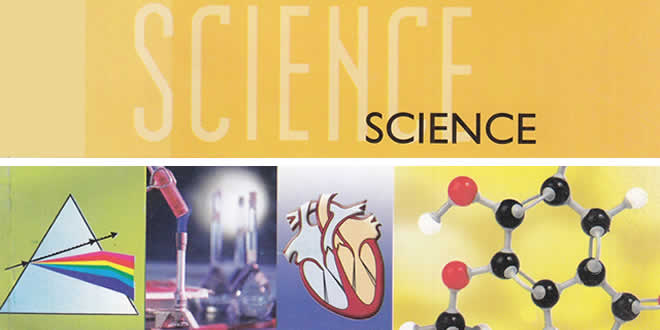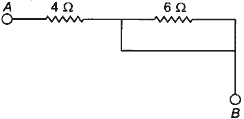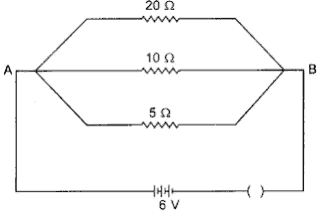Sources of Energy MCQs: CBSE Class 10 Science Chapter 12 Electricity Multiple Choice Questions with Answers. MCQ Questions for Class 10 Science with answers was prepared based on latest exam pattern. Students can solve NCERT Class 10 Science Electricity multiple choice questions with answers to know their preparation level.
| Class: | 10th Class |
| Subject: | Science |
| Chapter: | Chapter 12: Electricity |
| MCQs: | 42 Questions |
| Quiz: | – Questions |
Electricity MCQs
Class 10 Science Electricity MCQs with Answers & Explanation:
Free PDF Download of CBSE Class 10 Science Chapter 12 Electricity Multiple Choice Questions with Answers. MCQ Questions for Class 10 Science with Answers was Prepared Based on Latest Exam Pattern. Students can solve NCERT Class 10 Science Electricity Multiple Choice Questions with Answers to know their preparation level.
Class 10 Science MCQs Chapter 12 Electricity
Question 1. Assertion: When a battery is short circuited, the terminal voltage is zero.
Reason: In short circuit, the current is zero.
(a) Both A and R are true and R is the correct explanation of A.
(b) Both A and R are true but R is not the correct explanation of A.
(c) A is true but R is false.
(d) A is false but R is true.
(e) Both A and R are false.
Answer 1.
Question 2. Assertion: In an open circuit, the current passes from one terminal of the electric cell to another.
Reason: Generally, the metal disc of a cell acts as a positive terminal.
(a) Both A and R are true and R is the correct explanation of A.
(b) Both A and R are true but R is not the correct explanation of A.
(c) A is true but R is false.
(d) A is false but R is true.
(e) Both A and R are false.
Answer 2.
Question 3. Electrical resistivity of any given metallic wire depends upon
(a) its thickness
(b) its shape
(c) nature of the material
(d) its length
Answer 3.
Question 4. Two devices are connected between two points say A and B in parallel. The physical quantity that will remain the same between the two points is
(a) current
(b) voltage
(c) resistance
(d) None of these
Answer 4.
Question 5. 100 J of heat is produced each second in a 4Ω resistor. The potential difference across the resistor will be:
(a) 30 V
(b) 10 V
(c) 20 V
(d) 25 V
Answer 5.
Question 6. The resistivity of insulators is of the order of
(a) 10-8 Ω-m
(b) 101 Ω-m
(c) 10-6 Ω-m
(d) 106 Ω-m
Answer 6.
Question 7. An electric bulb is connected to a 220V generator. The current is 0.50 A. What is the power of the bulb?
(a) 440 W
(b) 110 W
(c) 55 W
(d) 0.0023 W
Answer 7.
Question 8. The electrical resistance of insulators is
(a) high
(b) low
(c) zero
(d) infinitely high
Answer 8.
Question 9. When electric current is passed, electrons move from:
(a) high potential to low potential.
(b) low potential to high potential.
(c) in the direction of the current.
(d) against the direction of the current.
Answer 9.
Question 10. The heating element of an electric iron is made up of:
(a) copper
(b) nichrome
(c) aluminium
(d) iron
Answer 10.
Electricity MCQs: 10th Class Science Chapter 12
Question 11. Coulomb is the SI unit of:
(a) charge
(b) current
(c) potential difference
(d) resistance
Answer 11.
Question 12. Work done to move 1 coulomb charge from one point to another point on a charged conductor having potential 10 volt is
(a) 1 Joule
(b) 10 Joule
(c) zero
(d) 100 Joule
Answer 12.
Question 13. The effective resistance between A and B is
(a) 4Ω
(b) 6Ω
(c) May be 10 Ω
(d) Must be 10 Ω
Answer 13.
Question 14. A student says that the resistance of two wires of same length and same area of cross section is same. This statement is correct if
(a) Both wires are of different materials
(b) Both wires are made of same material and are at different temperature.
(c) Both wires are made of same material and are at same temperature.
(d) Both wires are made of different materials and are at the same temperature.
Answer 14.
Question 15. A cooler of 1500 W, 200 volt and a fan of 500 W, 200 volt are to be used from a household supply. The rating of fuse to be used is
(a) 2.5 A
(b) 5.0 A
(c) 7.5 A
(d) 10 A
Answer 15.
Question 16. If the current I through a resistor is increased by 100% the increased in power dissipation will be (assume temperature remain unchanged)
(a) 100%
(b) 200%
(c) 300%
(d) 400%
Answer 16.
Question 17. A coil in the heater consume power P on passing current. If it is cut into halves and joined in parallel, it will consume power
(a) P
(b) P/2
(c) 2P
(d) 4P
Answer 17.
Question 18. If R1 and R2 be the resistance of the filament of 40 W and 60 W respectively operating 220 V, then
(a) R1 < R2
(b) R2 < R1
(c) R1 = R2
(d) R1 ≥ R2
Answer 18.
Question 19. A metallic conductor has loosely bound electrons called free electrons. The metallic conductor is
(a) negatively charged
(b) positively charged
(c) neutral
(d) Either positively charged or negatively charged
Answer 19.
Question 20. To get 2 Ω resistance using only 6 Ω resistors, the number of them required is
(a) 2
(b) 3
(c) 4
(d) 6
Answer 20.
Electricity MCQs: 10th Class Science Chapter 12
Question 21. Resistivity of a metallic wise depends on
(a) its length
(b) its shape
(c) its thickness
(d) nature of material
Answer 21.
Question 22. Assertion: Conductors allow the current to flow through themselves.
Reason: They have free charge carriers.
(a) Both A and R are true and R is the correct explanation of A.
(b) Both A and R are true but R is not the correct explanation of A.
(c) A is true but R is false.
(d) A is false but R is true.
(e) Both A and R are false.
Answer 22.
Question 23. Assertion: Bending of wire decrease the resistance of electric wire.
Reason: The resistance of a conductor depends on length, thickness, nature of material and temperature of the conductor.
(a) Both A and R are true and R is the correct explanation of A.
(b) Both A and R are true but R is not the correct explanation of A.
(c) A is true but R is false.
(d) A is false but R is true.
(e) Both A and R are false.
Answer 23.
Question 24. What is the commercial unit of electrical energy?
(a) Joules
(b) Kilojoules
(c) Kilowatt-hour
(d) Watt-hour
Answer 24.
Question 25. A boy records that 4000 joule of work is required to transfer 10 coulomb of charge between two points of a resistor of 50 Ω. The current passing through it is
(a) 2 A
(b) 4 A
(c) 8 A
(d) 16 A
Answer 25.
Question 26. A fuse wire repeatedly gets burnt when used with a good heater. It is advised to use a fuse wire of
(a) more length
(b) less radius
(c) less length
(d) more radius
Answer 26.
Question 27. Three resistors of 1 Ω, 2 ft and 3 Ω are connected in parallel. The combined resistance of the three resistors should be
(a) greater than 3 Ω
(b) less than 1 Ω
(c) equal to 2 Ω
(d) between 1 Ω and 3 Ω
Answer 27.
Question 28. Which of the following gases are filled in electric bulbs?
(a) Helium and Neon
(b) Neon and Argon
(c) Argon and Hydrogen
(d) Argon and Nitrogen
Answer 28.
Question 29. Electric power is inversely proportional to
(a) resistance
(b) voltage
(c) current
(d) temperature
Answer 29.
Question 30. An electric bulb is rated 220 V and 100 W. When it is operated on 110 V, the power consumed will be:
(a) 100 W
(b) 75 W
(c) 50 W
(d) 25 W
Answer 30.
Electricity MCQs: 10th Class Science Chapter 12
Question 31. 1 mV is equal to:
(a) 10 volt
(b) 1000 volt
(c) 10-3 volt
(d) 10-6 volt
Answer 31.
Question 32. A piece of wire of resistance R is cut into five equal parts. These parts are then connected in parallel. If the equivalent resistance of this combination is R’, then the ratio R/R’ is:
(a) 1/25
(b) 1/5
(c) 5
(d) 25
Answer 32.
Question 33. Electric potential is a:
(a) scalar quantity
(b) vector quantity
(c) neither scalar nor vector
(d) sometimes scalar and sometimes vector
Answer 33.
Question 34. What is the maximum resistance which can be made using five resistors each of 1/5 W?
(a) 1/5 Ω
(b) 10 Ω
(c) 5 Ω
(d) 1 Ω
Answer 34.
Question 35. A current of 1 A is drawn by a filament of an electric bulb. Number of electrons passing through a cross-section of the filament in 16 seconds would be roughly
(a) 1020
(b) 1016
(c) 1018
(d) 1023
Answer 35.
Question 36. The resistance of hot filament of the bulb is about 10 times the cold resistance. What will be the resistance of 100 W-220 V lamp, when not in use?
(a) 48 Ω
(b) 400 Ω
(c) 484 Ω
(d) 48.4 Ω
Answer 36.
Electricity MCQs – Question 37. The nature of the graph between potential difference and the electric current flowing through a conductor is
(a) parabolic
(b) circle
(c) straight line
(d) hyperbolic
Answer 37.
Question 38. Two resistors are connected in series gives an equivalent resistance of 10 Ω. When connected in parallel, gives 2.4 Ω. Then the individual resistance are
(a) each of 5 Ω
(b) 6 Ω and 4 Ω
(c) 7 Ω and 4 Ω
(d) 8 Ω and 2 Ω
Answer 38.
Question 39. Resistivity of a metallic wise depends on
(a) its length
(b) its shape
(c) its thickness
(d) nature of material
Answer 39.
Question 40. Calculate the current flows through the 10 Ω resistor in the following circuit.
(a) 1.2 A
(b) 0.6 A
(c) 0.2 A
(d) 2.0 A
Answer 40.
Electricity MCQs: 10th Class Science Chapter 12
Question 41. The least resistance obtained by using 2 Ω, 4 Ω, 1 Ω and 100 Ω is
(a) < 100 Ω
(b) < 4 Ω
(c) < 1 Ω
(d) > 2 Ω
Answer 41.
Electricity MCQs – Question 42. A battery of 10 volt carries 20,000 C of charge through a resistance of 20 Ω. The work done in 10 seconds is
(a) 2 × 103 joule
(b) 2 × 105 joule
(c) 2 × 104 joule
(d) 2 × 102 joule
 Class Notes NCERT Solutions for CBSE Students
Class Notes NCERT Solutions for CBSE Students







